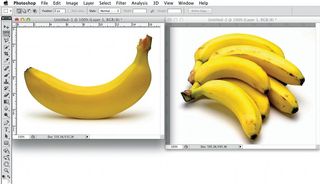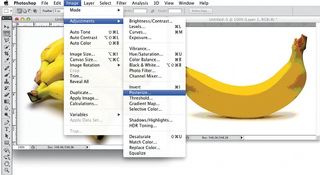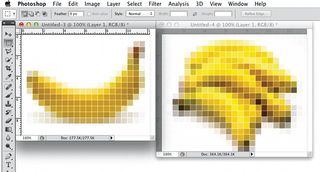Independent magazines go digital
The ongoing success of the iPad is creating amazing opportunities for independent mags. We speak to four small publishers making the most of it
Faced with declining circulations, rising print costs and competition from free sources like Google, blogs and social networks, traditional magazines are facing a perfect storm of changes that are threatening the very model their businesses have been built on. The launch of Apple Newsstand in October 2011 has helped some, but in this new adapt-or-die environment, simply churning out PDF versions of old print titles doesn’t always cut it. Which is why the future of publishing arguably belongs to the small, but growing band of independent publishers and magazines who are exploiting the power of tablets like the iPad to do amazing, engaging and immersive things with the medium.
For titles like Astronaut, Clear, Katachi, Letter to Jane and Post, going down the iPad route makes perfect sense – they’re able to sidestep the costs of print, distribution and promotion that bedevil traditional publishing, enabling them to enter the market at relatively low cost, while also giving them ready access to a fast-growing worldwide audience of tablet owners. Lower entry costs also make it possible for anyone – not just deep-pocketed tycoon types like Viscount Rothermere or the Barclay brothers – to launch their own digital magazine. All you need is talent, ideas and a digital publishing tool like Creative Suite or Mag+.

One great example of this new approach to publishing is Letter to Jane, an independent culture magazine created, curated and published by Oregon-based creative Tim Moore. Moore came up with the idea for Letter to Jane after he was unable to find work as a recent graduate. Originally launched as a blog in 2009, Letter to Jane first appeared in iTunes App Store form in the summer of 2011, with four issues – Letter to Jane, Late Autumn, Moral Tales and Shadows – published so far. Moore admits that he looked at the idea of producing a print version of Letter to Jane at first, but was put off by the high print and distribution costs. And then he found inspiration in the then new iPad: “I already had a MacBook, Apple’s development tools were free to download and the developer’s fee was only $99 a year, so I wasn’t taking much risk to explore, plus I had a ton of free time to take up the challenge,” says Moore. “As soon as I got some apps in the Store, I realised I could sell them for a few dollars and make almost the same kinds of profits, if not more, from the apps. I didn’t have to worry about distribution because it was in the App Store. All I had to do was promote a link.”
Given that Moore largely creates Letter to Jane on his own, it comes as little surprise to find that the magazine is stylistically very simple, comprising mainly flat colour or black-and-white images with text, audio and some video content. It lacks the budget or wow factor of rivals like Meri Media’s Post, but that’s not necessarily a bad thing, from Moore’s point of view: “I think I’m alone in the world by thinking it’s not necessary to have all those elements,” he says. “Like any other form of design, I feel that you should start with your content and then design around that. If the content you have lends itself to some form of interactivity then explore, but don’t force it, because that just gets in the way of the experience.”

For Moore, Letter to Jane is a labour of love. Each issue’s grids are created in InDesign, before being exported to Photoshop where images are made and added. Moore then takes all the content – typically 10-12 features per issue – and adds the interactive elements using Xcode. “Being able to work in Xcode and figure out interactions and then take that back into InDesign and let that help dictate the design and vice versa has become a very valuable process,” says Moore. “These days I’m doing most of my sketching out of ideas in Xcode and then finalising the look in InDesign and taking it right back.”
The result of this painstaking process is that each issue of Letter to Jane exists as a standalone app with its own bespoke elements, rather than forcing content into a pre-existing wrapper or template like many magazines in Apple Newsstand. That has both its benefits and pitfalls, of course. Moore freely admits that he’s never even covered his costs, let alone made any money from Letter to Jane, with combined sales from the magazine so far totalling only around 9,000-10,000 copies. But for Moore, making money isn’t really the issue: “Letter to Jane was such a huge gamble on my part and even if it’s never been the most lucrative product, I’m so happy that it is what it is.”
While Letter to Jane’s look is inspired by a cinematic aesthetic, Berlin-based Astronaut is concerned with cinema itself – particularly the unheralded makers of documentaries and short films, which are largely overlooked by a system still dominated by large Hollywood studios. Now on its second issue, Astronaut seamlessly blends photography, video, text content and interactive elements to provide a rich, engaging experience that’s aimed squarely at the Vimeo generation, yet assiduously avoids what editor Mickael Brock calls the interactive game element. “A magazine should trust its content and not try to impress the reader with an overload of features,” says Brock. “We have this hidden picture gallery, which we like to use, but this is as far as we want to go.”

Brock says Astronaut typically takes around four weeks of working 9-5 for its editorial team and contributors to put together, but the editorial process is often interrupted by the need to do projects for paying clients – who have commissioned the team off the back of the title. Brock estimates that each issue of Astronaut would cost around €30,000 (£24,171) to put together if it was costed at usual day rates, but says the real cost is much lower as most of it is created either in-house or by friends.
What’s really great about Astronaut is the way it seamlessly blends the magazine experience with an interactive one – it makes more use of text content than Letter to Jane, for example, but also includes plenty of audio, video and slideshow content to stimulate the senses. Its simple, gesture-based navigation is delightful – as you swipe from left to right, right to left or up-down you’re rewarded with parallax scrolling effects, semi-opaque overlays and all kinds of other neat UI surprises. There’s certainly enough on show here to elevate it above bog standard Newsstand magazines, but without being overly fl ashy or annoying from a reader’s perspective.
Clear magazine takes a similar mixed-media approach. Originally created as a luxury, art and fashion print title in 2001 by creative director Emin Kadi, Clear went fully digital in 2011 – a move prompted by both the general fall in print magazine sales and an opportunity to create new reader experiences, something Kadi believes is key to iPad publishing success. “People shouldn’t do page-fl ip magazines for a device that can do so much more,” says Kadi. “The audience is not expecting that underwhelming experience. So when we approached this, it was art directed from the standpoint of pushing the limits as far as we could go without grey-screen errors [errors that push the hardware/software to its limits].”

The one big drawback to pushing those limits is that increasing the amount of audio, video and interactivity inevitably has consequences in terms of the time and money spent producing each edition. Producing one issue of Clear takes around three months from start to finish, and also requires more resources and a wider talent pool of creatives to realise fully. “Obviously, in the print days it seemed like you needed a lot more staff,” says Kadi. “But now you need video and other types of creatives, so it’s a trade-off. Things get more expensive when you want to do more trailblazing effects and go for the wow factor.”
Whichever end of the iPad publishing spectrum ‘indies’ find themselves on, one thing is clear: giving up print has given them the freedom to create, innovate and push the boundaries of what’s possible when it comes to producing great magazines.
How to create a magazine: Five tips from top designers, over at Creative Bloq.
Get the Creative Bloq Newsletter
Daily design news, reviews, how-tos and more, as picked by the editors.

Thank you for reading 5 articles this month* Join now for unlimited access
Enjoy your first month for just £1 / $1 / €1
*Read 5 free articles per month without a subscription

Join now for unlimited access
Try first month for just £1 / $1 / €1
The Creative Bloq team is made up of a group of design fans, and has changed and evolved since Creative Bloq began back in 2012. The current website team consists of eight full-time members of staff: Editor Georgia Coggan, Deputy Editor Rosie Hilder, Ecommerce Editor Beren Neale, Senior News Editor Daniel Piper, Editor, Digital Art and 3D Ian Dean, Tech Reviews Editor Erlingur Einarsson and Ecommerce Writer Beth Nicholls and Staff Writer Natalie Fear, as well as a roster of freelancers from around the world. The 3D World and ImagineFX magazine teams also pitch in, ensuring that content from 3D World and ImagineFX is represented on Creative Bloq.
